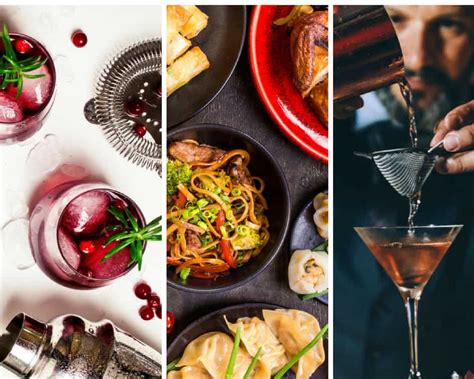The Complete Guide to Food and Beverage in the Hospitality Industry
The hospitality industry thrives on providing exceptional experiences, and food and beverage (F&B) offerings are a cornerstone of this success. From Michelin-starred restaurants to casual cafes, the F&B sector demands creativity, efficiency, and a deep understanding of customer preferences. This comprehensive guide delves into the intricacies of F&B in hospitality, providing insights for both aspiring and established professionals.
Understanding the F&B Landscape
The hospitality F&B landscape is incredibly diverse, encompassing a vast array of establishments and service styles. This includes:
- Fine Dining: Characterized by high-quality ingredients, sophisticated menus, and impeccable service. Requires skilled chefs, well-trained staff, and a refined atmosphere.
- Casual Dining: Offers a relaxed atmosphere and a more accessible menu, often focusing on speed and efficiency of service.
- Quick Service Restaurants (QSRs): Prioritizes speed and convenience, often featuring limited menus and self-service options.
- Bars and Lounges: Focus on beverage offerings, often complemented by light snacks or appetizers. Requires knowledgeable bartenders and a vibrant atmosphere.
- Catering: Provides food and beverage services for events, ranging from small gatherings to large-scale conferences. Requires excellent organizational skills and adaptability.
- Hotel Restaurants: Incorporated within hotels, catering to both hotel guests and external customers. Needs to balance diverse needs and provide consistent quality.
Key Aspects of Successful F&B Operations
Several critical components contribute to successful F&B operations in the hospitality industry:
1. Menu Engineering:
- Strategic Menu Design: Creating a menu that balances profitability, customer appeal, and operational efficiency is crucial. Consider food costs, customer preferences, and seasonal availability.
- Pricing Strategies: Implementing effective pricing strategies that maximize revenue and profitability while remaining competitive is essential.
- Menu Costing: Accurately calculating the cost of each menu item is vital for accurate pricing and profit margin management.
2. Food and Beverage Sourcing:
- Supplier Relationships: Building strong relationships with reliable suppliers is essential for consistent quality and timely delivery of ingredients.
- Inventory Management: Efficient inventory management techniques help minimize waste and ensure adequate stock levels. This often involves using inventory management software.
- Quality Control: Maintaining high standards of food quality and safety is paramount, requiring rigorous quality checks throughout the supply chain.
3. Staff Training and Management:
- Customer Service: Providing exceptional customer service is essential for creating a positive dining experience and encouraging repeat business. Regular training is vital for maintaining consistency.
- Hygiene and Safety: Strict adherence to hygiene and safety standards is crucial for protecting customer health and maintaining a positive reputation.
- Teamwork: A well-coordinated team is vital for efficient and smooth operations in a high-pressure environment.
4. Technology and Innovation:
- Point of Sale (POS) Systems: Modern POS systems streamline ordering, billing, and payment processes, improving efficiency and accuracy.
- Online Ordering and Delivery: Embracing online ordering and delivery platforms expands reach and caters to modern customer preferences.
- Data Analytics: Analyzing sales data and customer feedback provides valuable insights for menu optimization and operational improvements.
Trends Shaping the Future of F&B in Hospitality
The F&B sector is constantly evolving, with several key trends influencing its future:
- Personalized Experiences: Customers increasingly expect personalized service and menu options tailored to their preferences.
- Sustainable Practices: Growing demand for sustainable and ethically sourced ingredients is driving changes in sourcing and menu design.
- Technology Integration: Technology continues to transform F&B operations, improving efficiency and enhancing customer experiences.
- Experiential Dining: Dining is becoming increasingly experiential, with a focus on creating unique and memorable experiences beyond the food itself.
By understanding these key aspects and embracing innovation, F&B professionals can contribute to the continued success and growth of the hospitality industry. The focus should always be on providing exceptional experiences that exceed customer expectations and foster loyalty.
